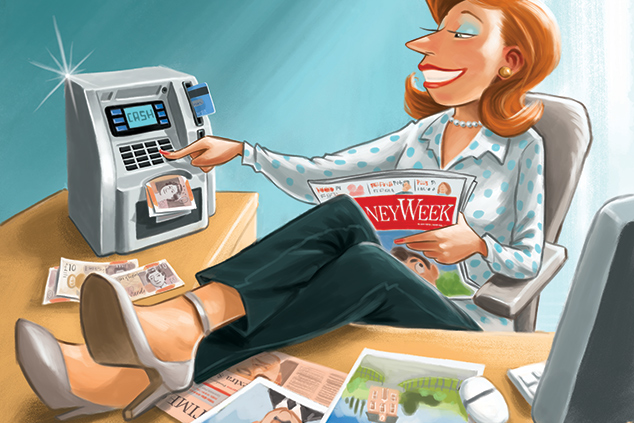
Companies with a consistent record of rising payouts look especially attractive at present. Dr Mike Tubbs introduces his favourite “dividend aristocrats”.
Nothing beats cold hard cash. In bull markets, investors are busy chasing rising stock prices; when the cycle turns, they rediscover the appeal of a steady dividend. No wonder. Reinvested income accounts for the vast majority of long-term returns. As the latest annual Barclays Equity Gilt Study notes, a £100 stake on UK equities in 1945 would have been worth £6,294 in real terms at the end of last year, assuming the gross income had been reinvested every year. Without dividend reinvestment, the £100 would barely have tripled after inflation. Now that global markets are wobbling, defensive stocks offering safe dividend yields – and the prospect of at least some share-price growth – are especially sought after.
That combination appeals more than cash accounts offering paltry interest rates, especially as British income stocks look historically cheap (see bottom).
A 25-year record
A good dividend stock is safe and reliable. A special few have increased their dividends every year for at least 25 years. I think of them as the “dividend aristocrats”. This kind of consistency is crucial as you do not want to buy a stock for income only to find the payout is suddenly reduced or cancelled, a change that is inevitably accompanied by a major share-price fall: witness Tesco’s 50% slide in 2014 after it admitted to overstating its profits and scrapped the payout for two years.
“£100 in 1945 would be worth £6,294 now with income reinvested”
Dividend aristocrats with at least 25 years of consecutive increases form a very select group. There are only 53 in the S&P 500, for instance. A handful of firms are dividend “super-aristocrats”, having increased their dividends each year for more than 50 years; in three cases, for more than 60. Before we take a closer look at the aristocrats, however, consider some simple tests that investors can use to check that a company is likely to carry on paying and increasing its dividend.
Avoiding a dividend disaster
Even if a company has raised dividends for more than 25 years, investors should still apply three simple checks. The first is to look at dividend cover, the ratio of earnings-per-share (EPS) to the dividend-per-share (DPS). A ratio of two or more – the payout is at least twice covered by earnings, in other words – is healthy in this context.
You should also gauge whether free cash flow per share is comparable to EPS, which indicates that profits are backed up by cash generation rather than stemming from creative accounting. Free cash flow should certainly be much larger than the cost of the dividend. The third step is to check that the company either has net cash on the balance sheet or only modest debt. One way to do this is to find the debt/ebitda (earnings before interest, depreciation and amortisation) ratio, which captures the relationship between debt and operating earnings. If debt is too high in relation to operating cash generation, there is a danger the money the company generates may have to go towards reducing borrowings rather than paying investors an income. A ratio above two looks precarious; I prefer a ratio of one or less.
The clues at Cobham
A case where these criteria would have provided a useful warning was UK aerospace group Cobham, which pioneered air-to-air refuelling. The Daily Telegraph reported in 2013 that Cobham had increased its dividend every year for 43 years. It went on to increase it up to the 2015 financial year, but a series of acquisitions paid for with increasing debt and problems at one US purchase stretched its finances and it paid no dividends at all in 2017 and 2018. However, the preliminary results for the year to 31 December 2015 showed negative dividend cover (a loss of 3.3p but DPS of 11.18p), even though analysts focused on “underlying” EPS of 19.5p. In addition, free cash flow was less than the cost of the dividend and net debt stood at £1.2bn, yielding a debt/ebitda ratio of 2.9. So all three warning signs were there.